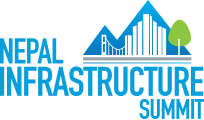Infrastructure Summit to herald avenues for development
 Sharachchandra Bhandary / Kathmandu, Jan 14: With an intention to give impetus to slow-moving infrastructure development, the country is gearing up to host infrastructure summit here next month heralding avenues for development.
Sharachchandra Bhandary / Kathmandu, Jan 14: With an intention to give impetus to slow-moving infrastructure development, the country is gearing up to host infrastructure summit here next month heralding avenues for development.
The Second Nepal Infrastructure Summit, in association with government of Nepal and development partners to be hosted by the Confederation of Nepali Industries (CNI) next month is expected to give a boost to sluggish economic growth and attract investment in infrastructure sector development.
The summit slated for February 19 and 20, is anticipated to discuss the bottlenecks of physical infrastructure development and suggest ways to enhance the capacity of private sector partnering with the government. It is also presumed that the Summit will focus on the strategic vision of the country, value proposition, competitiveness, policy and regulatory enablers, and business ethics.
The theme of the summit is ‘Private Sector as Indispensable Partner,’ which will dwell in attracting large-scale private investment in hydro power generation, highways and airports. Linking South Asian nations for the greater benefit of the people of this region and promoting Nepal’s tourism industry is one of the key objectives of the summit.
After decades of constant political experimentation and sluggish development, our nation is at the cusp of a potential growth take-off on the bedrock of an inclusive democracy. This potential cannot be realized without much improved governance that nurtures pluralism, promotes social progress and helps create broadly-shared wealth. This needs an enabling state that partners with a dynamic private sector to create jobs and foster entrepreneurship; regulates smartly; and builds strategic public infrastructure to crowd-in private investment.
We need to deliver better public services, nurture economic agglomeration, and narrow distances inside Nepal as well as with China and India. Nepal suffers an infrastructure deficit on an epic scale, stifling vast human potentials on several fronts. A World Bank estimate of the country’s “infrastructure gap” pegs investment needs at between 8 and 12 percent of national income this decade. Nepal grossly under spends, and what is built does not last. Compounding the cumulative shortfall, the devastating earthquake of April 25, 2015 claimed 9000 plus lives and imposed an economic cost worth over US$7 billion. About 70% of the early needs assessed by the National Planning Commission concerned the rehabilitation and reconstruction of resilient infrastructure and housing.
Nepal’s medium-term ambition is to become a middle-income nation by 2030, while graduating out of the status of a least developed country (LDC). This is only possible with high growth rates sustained by productive capital formation. This demands rapid development of infrastructure driven largely by a private sector (local and foreign) that has the technical, managerial and financial clout to deliver efficient, high-quality and cost-effective results on the ground. There is also now a need to link the techno-financial feasibility of projects with the evolving legal-political landscape as the new constitution federates the country into seven provinces.
Hari Bhakta Sharma, president of CNI, portraits the bleak status of infrastructure in the country and cautions policy makers and all concerned to seriously take up the development issues before the nation plunges into the nadir. “As a result of infrastructure deficit, industrial and other sectors in Nepal are lagging far behind compared to other countries,” he said adding that infrastructure summit not only targets to draw big investment in infrastructure sector, but also forge stronger network and alliance in South Asia for seamless connectivity.
According to Sharma, the summit will also focus on strategic vision of infrastructure, value proposition, competitiveness and policies, particularly in land acquisition and also consolidate and build upon the achievements of the first Nepal Infrastructure Summit held in 2014.
The summit will draw more than 500 domestic and foreign investors including consulting partners, legislators, diplomats, thought leaders, consulting service providers, development partners, among others. CNI will showcase the project bank developed by Investment Board Nepal (IBN) to investors that comprises 50 viable infrastructure projects. The summit will also present and explore different barriers and constraints in attracting private and public investment, ways to expedite public-private partnership (PPP) model in investment and financing issues in infrastructure.
Informing infrastructure has been the biggest bottleneck for development of other sectors, President Sharma said huge investment in infrastructure is required for Nepal’s target to become a middle-income nation by 2030 and graduate out of status of least developed country by 2022. “This would be possible with high growth rates sustained by productive capital formation, which is possible through active participation of private sector in development activities.” he observed. RSS
